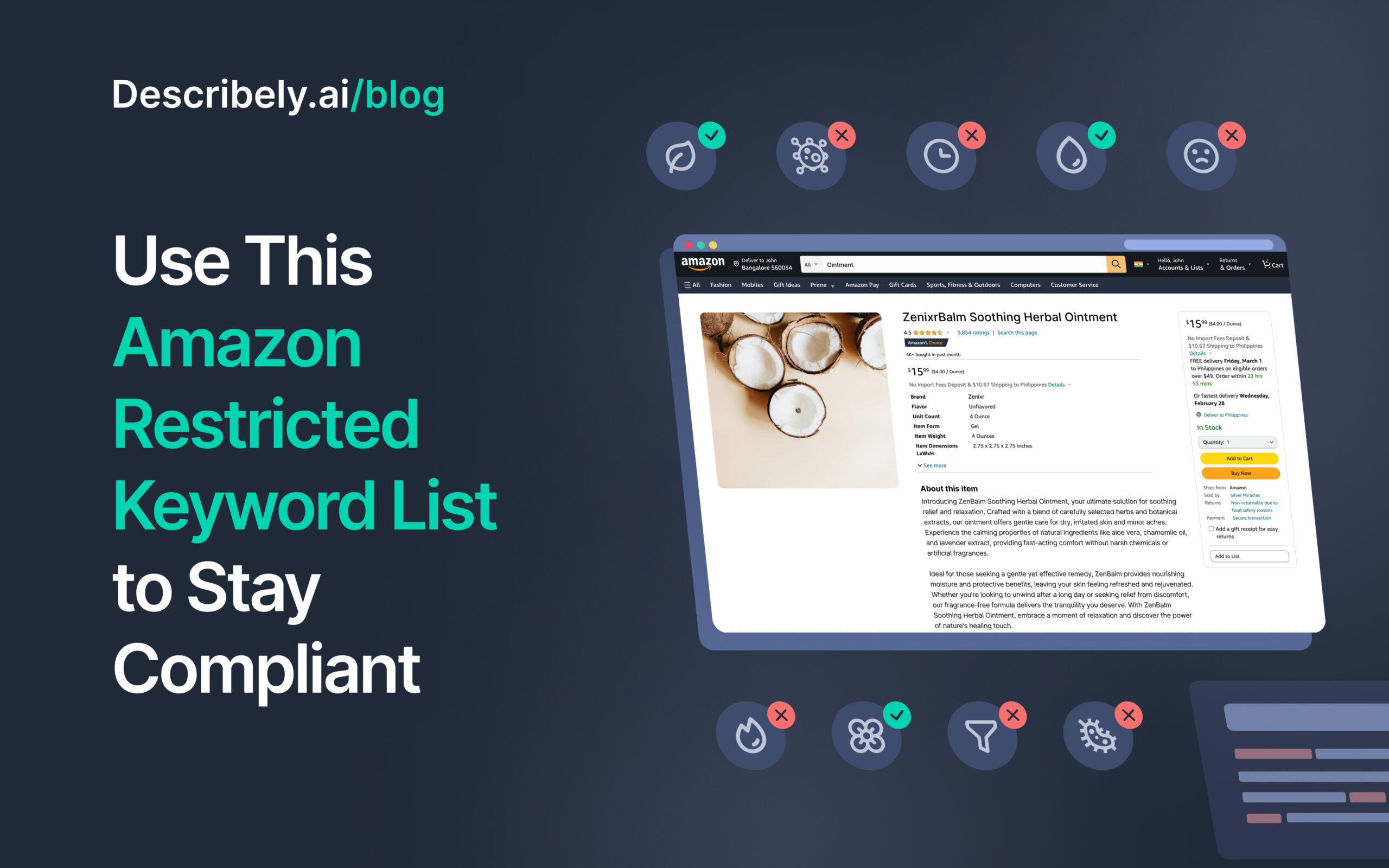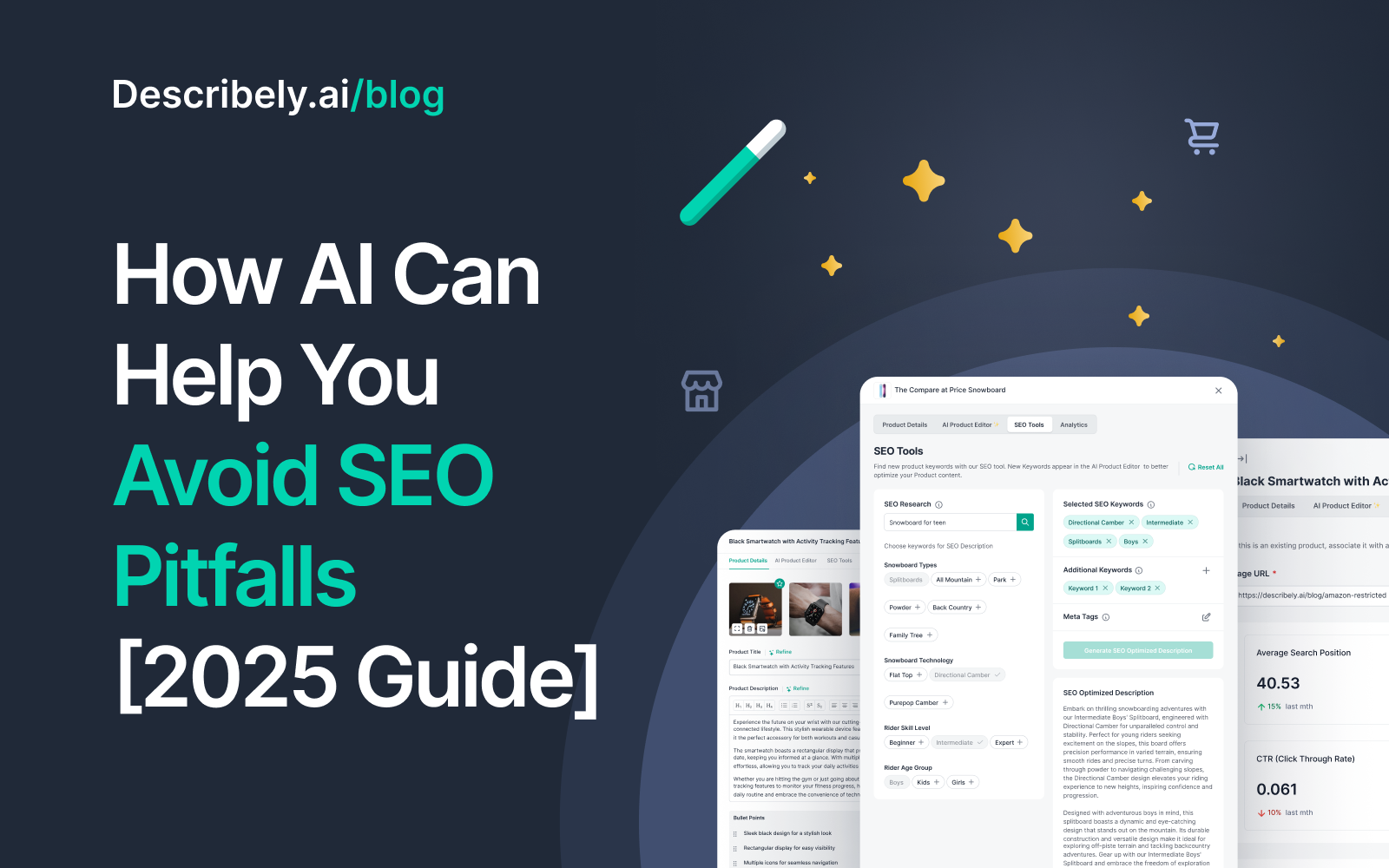
How Describely Helps You Create SEO-Friendly Product Content That Satisfies Google’s E-A-T
During one of our super-secret and super-interesting internal meetings, the sales, CX, and marketing team had a heart-to-heart discussion,
The overlying feedback from this meeting was that the sales team had been getting questions about Describely’s SEO capabilities. The sales and CX team said to us, the marketing team, “Hey, why don’t you create a content asset about this?”
So, here’s where it brings us—publishing a blog to answer some of the SEO-related questions the sales and CX team sent us. Don’t worry—we’ve jotted down each question very carefully (Thanks, Kyle!), and we’ll answer each one of them to the best of our abilities.
Let’s get started!
What can I do with Describely SEO-wise?
Good question! Before we dive into the semantics, it’s worth mentioning that Describely’s AI considers SEO best practices when creating product content (we’ll dive more into what these best practices are in the later sections).
However, if we’re strictly speaking of Describely’s SEO feature set, here are some of the standout features it offers:
- Ability to generate relevant keywords based on product search terms.
- Being able to create meta titles and meta descriptions (we try to adhere to SEO best practices by sticking to Google-suggested character limits).
- Allowing users to add additional SEO keywords (based on their own research) that can further be integrated into the product copy.
- Customizing how Describely writes meta content, product descriptions, and titles, among other things (e.g., you can set the tone, word count, output language, etc).
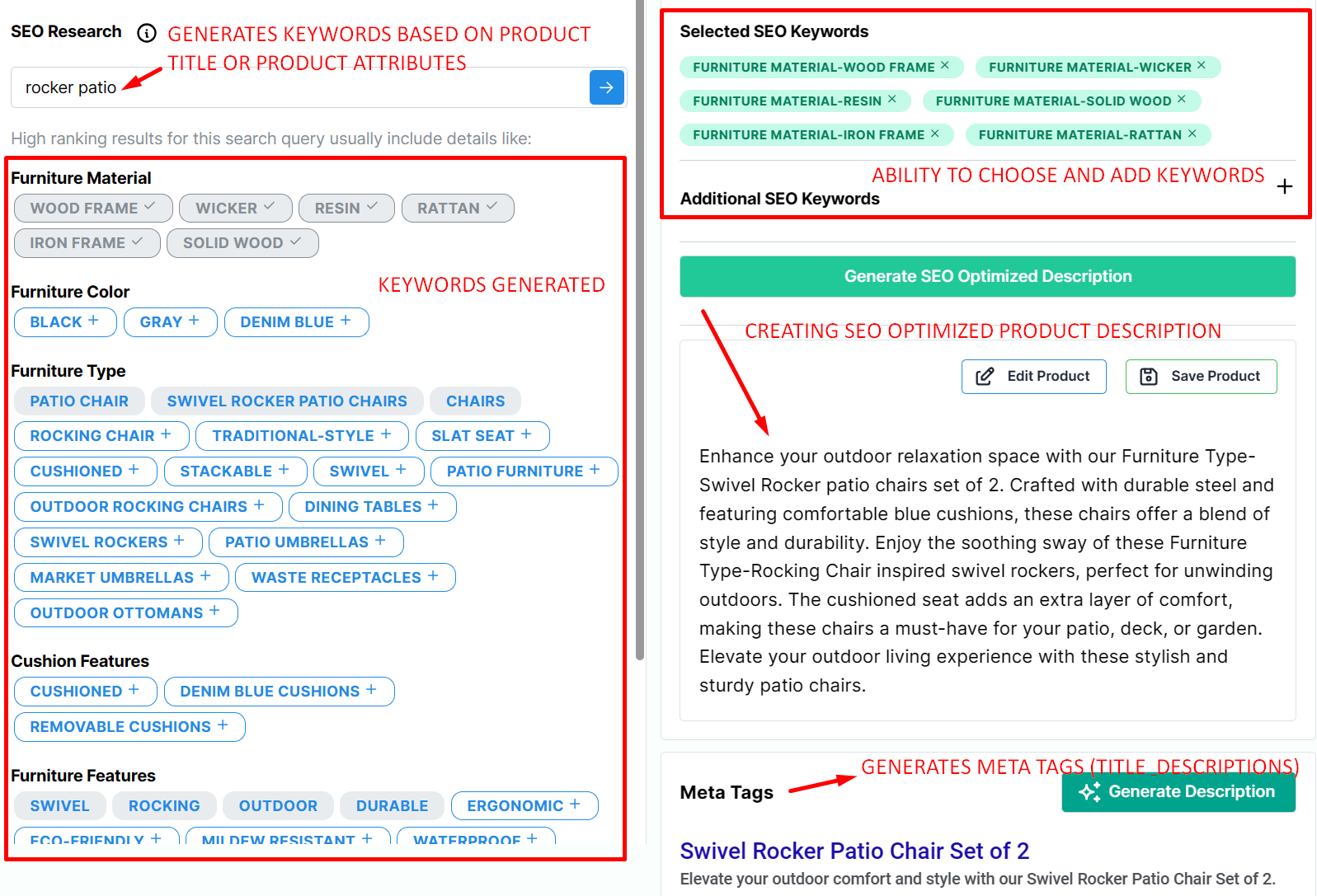
It’s also important to note that the way SEO and search engine rankings operate may change in a couple of months and weeks (especially with Google’s new updates like SGE and site penalties).
But even with these recently evolving changes, only one thing remains the same: Google (and other search engines) will only rank sites or use content from sites that have high-quality content—-and creating excellent content is Describely’s core capability (not to toot our own horn here, but even eCommerce giants like Target have loved the descriptions generated by Describely).
What do you mean it “satisfies Google’s E-A-T”? What exactly does Describely do that satisfies these guidelines?
Google has been very vocal about the fact that it relies on the E-A-T (Expertise, Authority, and Trust) to rank content. Safe to say, if you create high-quality content that builds trust and showcases your knowledge about your product, you’ll rank higher on the search engines.
And Describely helps you satisfy exactly that use case—-aka, you can create excellent product content with the help of Describely that’s attuned to your brand style guide, tone, preferences, and more.

Aside from this, Describely also helps you rank your content higher by:
- Structuring and formatting content in a digestible manner;
- Creating descriptions that are easy to read; and
- Having an in-built Amazon restricted keyword list.
(Fun Fact: The restricted keyword list is beneficial for all eCommerce stores and not just Amazon, as it helps you avoid issues surrounding legality, compliance, reputation management, and customer satisfaction.)
Other few SEO and content-related benefits Describely offers are:
1. Describely keeps your product USPs in mind
You can ask Describely to source product information from the product images you provide, or you can manually write attributes through bullet points. Regardless of whichever option you choose, our AI will keep all product data in mind before writing product descriptions.
For reference, here’s a real-life example of how Describely changes bullet points into publish-ready product descriptions.
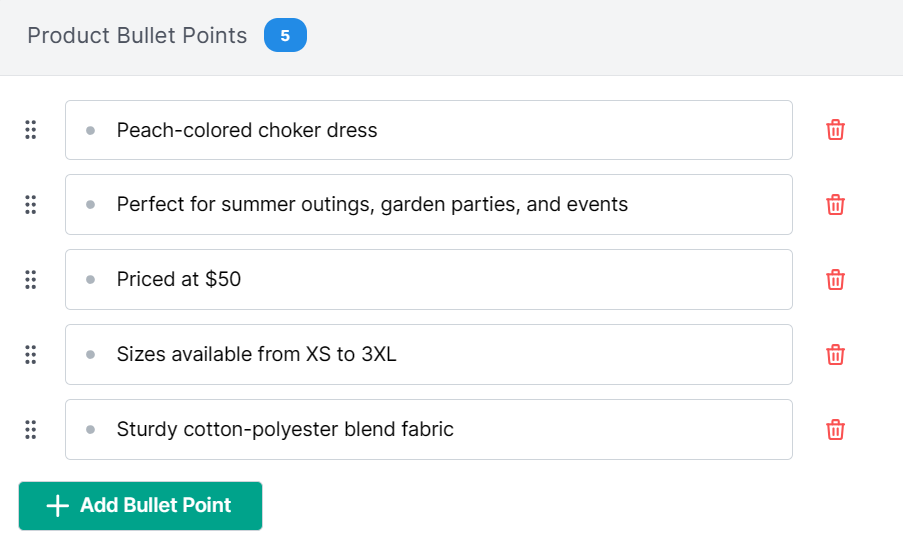

2. It can scrape the internet/manufacturer’s site for relevant information
To ensure your product content adheres to Google’s E-A-T, you’ll need to make it highly valuable and descriptive. This task can get pretty difficult (or cost you some💰💰💰) if you manually write product attributes for each description.
To make the task simpler, Describely has a data enrichment feature through which it scrapes the internet and your manufacturer’s site to find all the necessary product information and write descriptions based on this data.
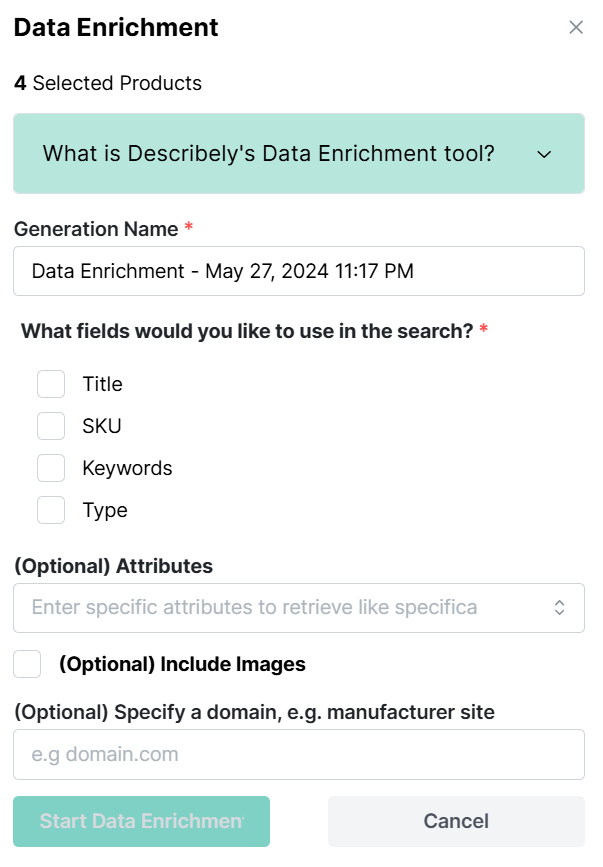
3. Describely’s training data is filled with top-ranking product descriptions from real brands
Since AI has a “garbage in, garbage out” philosophy, the inverse (aka, good content in, good content out) also applies. This means that if you feed your generative AI all sorts of information, it’ll create content with no core specialty.
However, Describely’s AI is trained based on high-converting product descriptions from real (eCommerce) brands. This means that it follows the same practices as those descriptions. In reality, this means your product descriptions will also end with CTAs, be structured in a short and succinct way, and use easy-to-read language.
4. We produce resources that help you create content
Lastly, this is not related to Describely as a technology but to Describely as a company—we’re constantly evolving and trying to provide our eCommerce customers with the best possible resources.
This means we’re investing in content assets, articles, videos, product updates, our newsletter, and our social media presence to educate our audiences on what they could do with our technology and how to create better product descriptions with Describely.
For example, since we’re on the topic of Google’s E-A-T, here’s an excellent resource from two of our SMEs on how to boost sales during the holiday season by building trust in your product pages: Kayla and Wade’s Insights On Building Trust in Product Pages
Can Describely do keyword research in bulk for me?
Describely doesn’t do keyword research in bulk, and there’s a good reason for this: SEO is not really a task you can do in batches or in bulk, especially in today’s volatile environment.
For each product description you work on, you’ll have to approve keywords based on two main concerns:
- Does the keyword match the search intent?
- Does it look organic (or can your customers point out it was added in for SEO)?
But just to reiterate: Describely will give you multiple keyword options based on product attributes (and will even categorize them neatly). You can also add your own SEO keywords and ask Describely to integrate them into the product description.
What about keyword stuffing—does it do that?
NOPE! This is regarded as a negative practice by most search engines so Describely doesn’t partake in it.
Our AI is trained to create digestible content, so it’ll write for humans and not search algorithms. Even if it integrates certain keywords in the description, it doesn’t do keyword stuffing.
Can Describely generate meta content in bulk for me?
This is something you can do. Both meta titles and meta descriptions can be created in bulk, as well as updated and reviewed in bulk.
As a company that specializes in eCommerce product content, we completely understand the importance of actionable and insightful meta tags, which is why we have created Describely as such that it follows your desired instructions for meta content.
For reference, you can customize the character count, tone, output language, etc., of your meta content and tell Describely what you want the meta description to say (e.g., An instruction could be “Highlight product benefits and price”).

From an SEO perspective (and not from an eComm perspective), why should I consider using Describely?
Again, a great question! Here are some of the benefits Describely could offer you as an SEO expert:
- You don’t need to invest so much time into keyword research. Describely sources (and categorizes) the keywords for you!
- It also allows you to create product content that search engines will like. (To recap, Describely structures content for Google’s E-A-T, scrapes data from the internet/manufacturers’ sites to write valuable information, and uses jargon-free language).
- You can customize your SEO content preferences with AI rulesets. For example, you can personalize CTA instructions (which will let you attain a desired action), customize the character count of your descriptions/meta tags (which will help you keep up with Google’s algorithm preferences), and change the tone/output language of your content (which can help with tasks like local SEO).
- Describely follows other SEO best practices like never duplicating content, stuffing keywords, or using the restricted keyword list.
- We create content primarily for users (and not search engines). We all know this type of content is more digestible, improves customer experience, helps increase SERP rank, and provides valuable information based on customer intent and product USPs.
Final thoughts on Creating SEO-Friendly Product Content That Satisfies Google’s E-A-T
It’s worth reiterating that the way we consume SEO content, even in eCommerce, is constantly changing, especially as users shift to other channels (e.g., social media) for their searches, and search engines take the primary digital real estate with sponsored ads, SGE, and PAA responses.
Even with these changes upon us, the true tried-and-tested way to rank on top remains the same: Create valuable content that delivers on the search intent and that customers actually want to read.
And that’s Describely’s core value prop. It’s what our technology does best. It’s what it’s trained to do—-create eCommerce product content customers actually want to read.
And if that’s the kind of technology you want in your eCommerce tech stack, all you need to do is sign up! Learn how Describely can help you create content that sells more and ranks higher.


